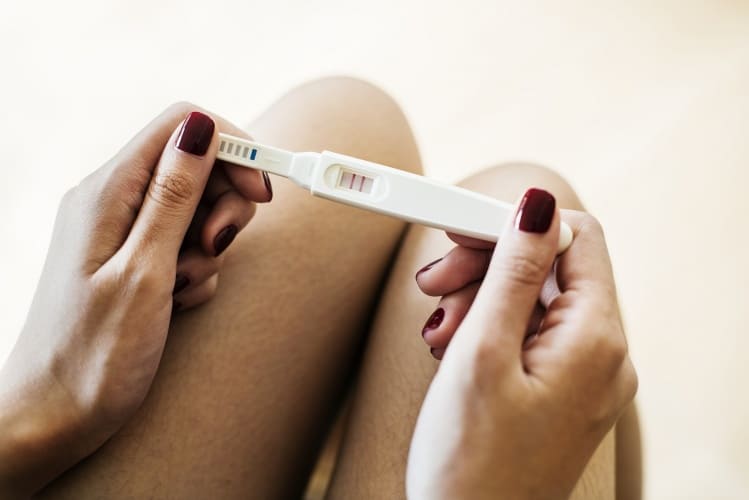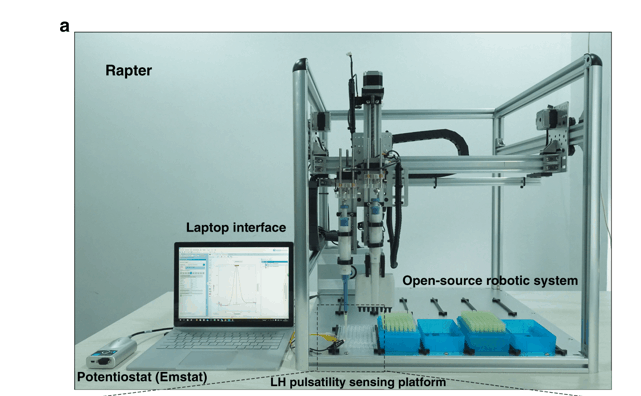
Known as RAPTER (Robotic APTamer-enabled Electrochemical Reader), the platform was developed by researchers at Imperial College London and The University of Hong Kong. It uses a novel biosensor to measure the rise and fall – or pulsatility - of luteinizing hormone (LH), something that can indicate different states of reproductive health in women.
It is not currently feasible to measure LH pulse patterns in a clinical setting as doctors need to take a blood sample from patients every 10 minutes for at least eight hours. RAPTER combines the new biosensor with a 96-well robotic testing system that is connected to a laptop, allowing this painstaking cycle of fertility testing to be automated. The system is described in Nature Communications.
"Reproductive health issues are common amongst women in the UK and around the world,” said Professor Waljit Dhillo, NIHR Research Professor in Endocrinology and Metabolism at Imperial College London, and one of the lead authors of the study.

“Diagnosis of some of these conditions can be lengthy resulting in delays to treatment. Reproductive health issues can also impact on women's mental and physical wellbeing. There is a clear need for new and better ways to diagnose these conditions more quickly. Our technology will be able to give clinicians a faster and more accurate diagnosis of hormone pulsatility that affects reproductive health, which could lead to better and more targeted treatments for women."
The study took place between 2015 and 2019 at Hammersmith Hospital. It measured LH pulse patterns from 441 blood samples of women who either had normal fertility function, were menopausal, or had hypothalamic amenorrhea, a condition where a woman's period stops.
The RAPTER platform was able to detect changes in LH pulse patterns in patients with reproductive disorders. It was also able to distinguish between different patient cohorts for the first time using this new technology. For example, women with menopause have high LH levels compared to fertile women with normal LH levels, or women with hypothalamic amenorrhoea who have low LH levels. Unlike current methods, the test is low-cost and can provide results instantly, according to the researchers. The next phase of development will aim to streamline the technology to the point where it is comparable to a glucose monitoring device.
"We have developed technology that is able to measure LH pulsatility in patients more quickly and cheaply than current methods,” said Professor Tony Cass, a senior author of the study from the Chemistry Department at Imperial College London. “We will now work towards making the technology more accessible for the clinic by reducing the size of the device, which could revolutionise the clinical care of patients with reproductive or other disorders.”




Red Bull makes hydrogen fuel cell play with AVL
Formula 1 is an anachronistic anomaly where its only cutting edge is in engine development. The rules prohibit any real innovation and there would be...